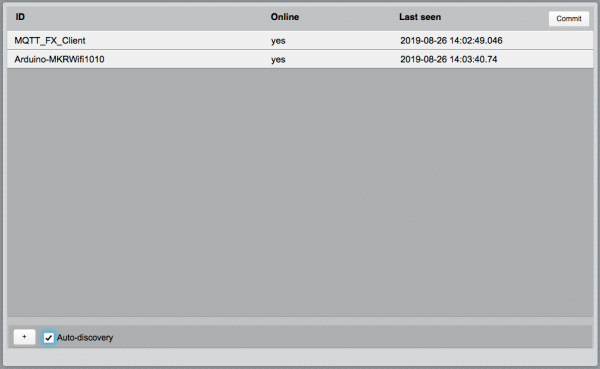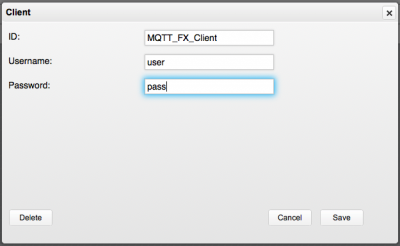Difference between revisions of "SIGFOX Utility"
| Line 6: | Line 6: | ||
| − | [[File:MQTTBROKER_Util_discovery.png|border|600px|center| | + | [[File:MQTTBROKER_Util_discovery.png|border|600px|center|Devices discovery]] |
From the list, click on each device to edit and save its configuration. | From the list, click on each device to edit and save its configuration. | ||
| − | [[File:MQTTBROKER_Util_config.png|thumb|400px| | + | [[File:MQTTBROKER_Util_config.png|thumb|400px|Device configuration]] |
'''Parameters''': | '''Parameters''': | ||
Revision as of 16:58, 20 October 2020
The SIGFOX Utility application provides a graphical interface to configure a SIGFOX I/O Server. You can choose your SIGOX I/O Server in execution by selecting it on the top of the page
In order to automatically add new Sigfox devices to SIGFOX I/O Server enable auto-discovery ("Auto-discovery" checkbox). Sigfox devices will appear in the list:
From the list, click on each device to edit and save its configuration.
Parameters:
- ID: the ID of the device. It cannot be empty
- Name: device name
- Model: device model (select among those available)
To manually add a device click on the "+" button at the bottom-left corner of the page.
To remove a device, click on it from the list, click on "Delete" and confirm. If the auto-discovery is enabled, the device will reappear in the list upon the next message coming from it.
Disable the auto-discovery when all the required devices have been configured.
The devices list shows the following fields:
- ID: ID of the device
- Name: device name
- Model: device model
- Last seen: date and time of the last received valid message (including keep-alive)
Committing the configuration
When all devices are configured, click on the "Commit" button on the top-right corner of the main page. The configuration will be persisted and the SIGFOX I/O Server will restart with the new configuration.

